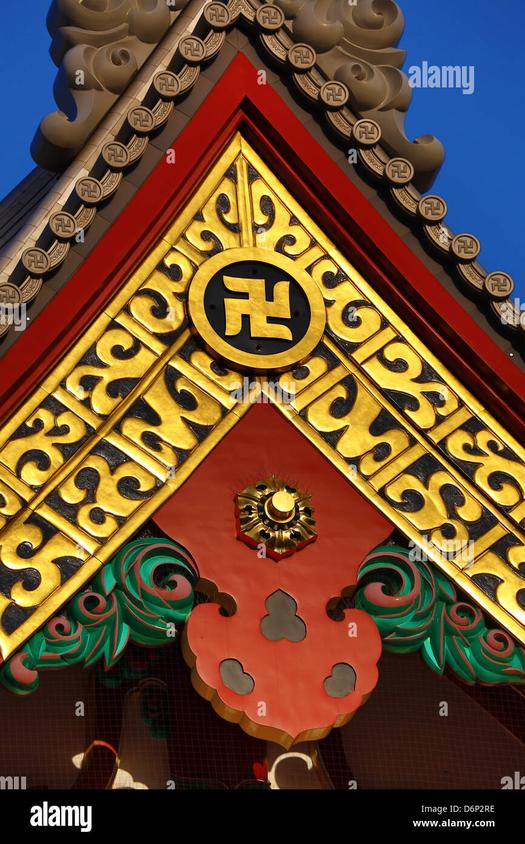The Swastika appears everywhere due to its deep-rooted historical significance and widespread cultural adoption across different regions and times. It likely originates as a symbol representing the sun, with its four arms symbolizing the sun’s movement or the four seasons. This simple yet powerful imagery resonates universally, explaining its frequent presence in many ancient cultures.

The symbol’s meaning varies widely among cultures. In Hinduism, Buddhism, and Jainism, the Swastika denotes auspiciousness, prosperity, and the cycle of life. Contrastingly, in the West, the symbol’s meaning became heavily distorted due to its adoption by Nazi Germany in the 20th century, leading to a negative association that overshadows its ancient positive connotations.
The Swastika’s global spread might also be linked to migration and trade by ancient nomadic peoples. These groups potentially helped disseminate symbols and ideas over vast areas, explaining how the Swastika—or similar motifs—appeared independently in multiple civilizations. Some theories suggest Aryan travelers spread the symbol to India and beyond, though this lacks solid historical validation and mixes mythology with nationalist narratives.

Such myths often attempt to explain the commonality of symbols like the Swastika or architectural features such as pyramids worldwide by proposing the presence of early wise travelers or advanced ancient civilizations. However, these theories remain speculative and lack concrete archaeological evidence.
| Aspect | Explanation |
|---|---|
| Sun Symbolism | Four arms represent sun’s revolution or seasons |
| Cultural Variation | Symbol holds different meanings globally |
| Nomadic Spread | Possible dissemination by migratory peoples |
| Mythical Origins | Legends link symbol to ancient travelers; evidence is weak |
- The Swastika is historically a symbol tied to the sun and cyclical nature.
- Its meaning changes according to cultural context.
- Ancient migrations may have spread the symbol globally.
- Myths about Aryan travelers and lost pagan knowledge exist but lack firm proof.
Why is the Swastika Everywhere? Unraveling the Sun, Seasons, and Stories Behind the Ancient Symbol

If you’ve looked around the world—whether examining ancient temples, old fabrics, or even modern cultural symbols—you might’ve noticed one shape popping up again and again. That shape? The infamous swastika. But wait: Why is the swastika everywhere? And, how did it take on such diverse meanings, from sacred to sinister? Let’s dive in with open minds and a curious heart.
First off, if you’re thinking, “Isn’t the swastika just that symbol the Nazis used?”—hold that thought! That’s only a snippet of its story. The swastika’s history predates the 20th century by thousands of years. It’s a symbol worn by many cultures, long before it became tarnished in recent history.

So, why exactly is the swastika everywhere?
The simplest and most widely accepted explanation revolves around the sun itself. The swastika is thought to represent the Sun—the giver of light, heat, and life. Its four arms—each bent at right angles—may symbolize solar movement or the four seasons. Imagine ancient peoples, watching the sun’s steady journey along the sky, and capturing that eternal motion with a simple, repeating pattern.

Think of it this way: the swastika encapsulates change and stability simultaneously. Four arms stretching outwards can represent the seasons—Spring, Summer, Autumn, Winter—each with its distinct charm and importance to survival. Or those arms might mirror the sun’s daily revolution. The symbol’s very design, dynamic yet balanced, makes it perfect for conveying concepts tied to cycles and time.
Now, here’s where things get downright fascinating: the swastika isn’t just one symbol with a single story. It has multiple origins, depending on where you look on the map. In India, it often signifies good fortune and well-being, rooted deeply in Hindu and Buddhist traditions. Native American tribes use similar shapes representing life cycles and nature. Even the ancient Celts had versions etched into their artifacts.

It’s like a global tourist—but instead of sightseeing, it’s spreading meaning, hope, and warmth. This branching out hints at another theory: ancient nomadic peoples might have carried the symbol across continents. Picture wise travelers, moving caravans, and trade routes weaving culture together like threads in a tapestry. These nomads didn’t just carry goods—they carried ideas, stories, and symbols, one being the swastika.
Fascinatingly, the Nazi regime, despite the symbol’s broad use, co-opted the swastika to depict Aryan racial ideals. This adoption is not simply a matter of invention; Nazi mystics believed in ancient Aryan travelers who had supposedly journeyed to India and other parts of Asia. They dug into Hindu myths to unearth lost pagan symbols, hoping to retrieve a forgotten “golden age” of their own making. Though these connections were mostly imagined or distorted, they added a dark layer to the swastika’s complicated history.
A quick reality check: many of these myths—whether about pyramids, the swastika, or other ancient symbols—lack solid proof. The idea of groups of “wise travelers” spreading unified symbols fits nicely on paper but remains unproven. It’s a rich area where history, legend, and speculation blend.
Given this rich context, ask yourself: When you see the swastika today, what story should you think of? A symbol of auspiciousness and life cycles? Or one shadowed by hate and appropriation? The answer depends on who’s looking and where.
The swastika’s story is a mirror reflecting the culture that holds it. It teaches us about shared human experiences, and the risks when a symbol is distorted. If you visit a temple in India, the swastika wraps you in blessings and sacred history. Encounter it in Western museums or history books, and it may bring a wave of uncomfortable remembrance. Both views are real—both deserve acknowledgment.
So, what can we learn?
- The swastika is far more than a single symbol. It’s a cosmic song played in many keys.
- Understanding its variations encourages respect for cultural diversity and awareness of history’s complexity.
- Symbols evolve. They gather new meanings, sometimes joyful, often painful.
- Questioning myths about ancient travelers and shared origins can sharpen critical thinking about history versus legend.
In essence, the swastika is everywhere because it embodies universal themes: light, cycles, life, and humanity’s quest for fortune and meaning. It’s a reminder that even a simple shape can carry powerful, multifaceted stories across time and space.
Next time you spot the swastika, pause a moment. What story does it tell you? Maybe it asks you to see the world as a place where different histories meet, collide, and sometimes reunite in unexpected ways.




